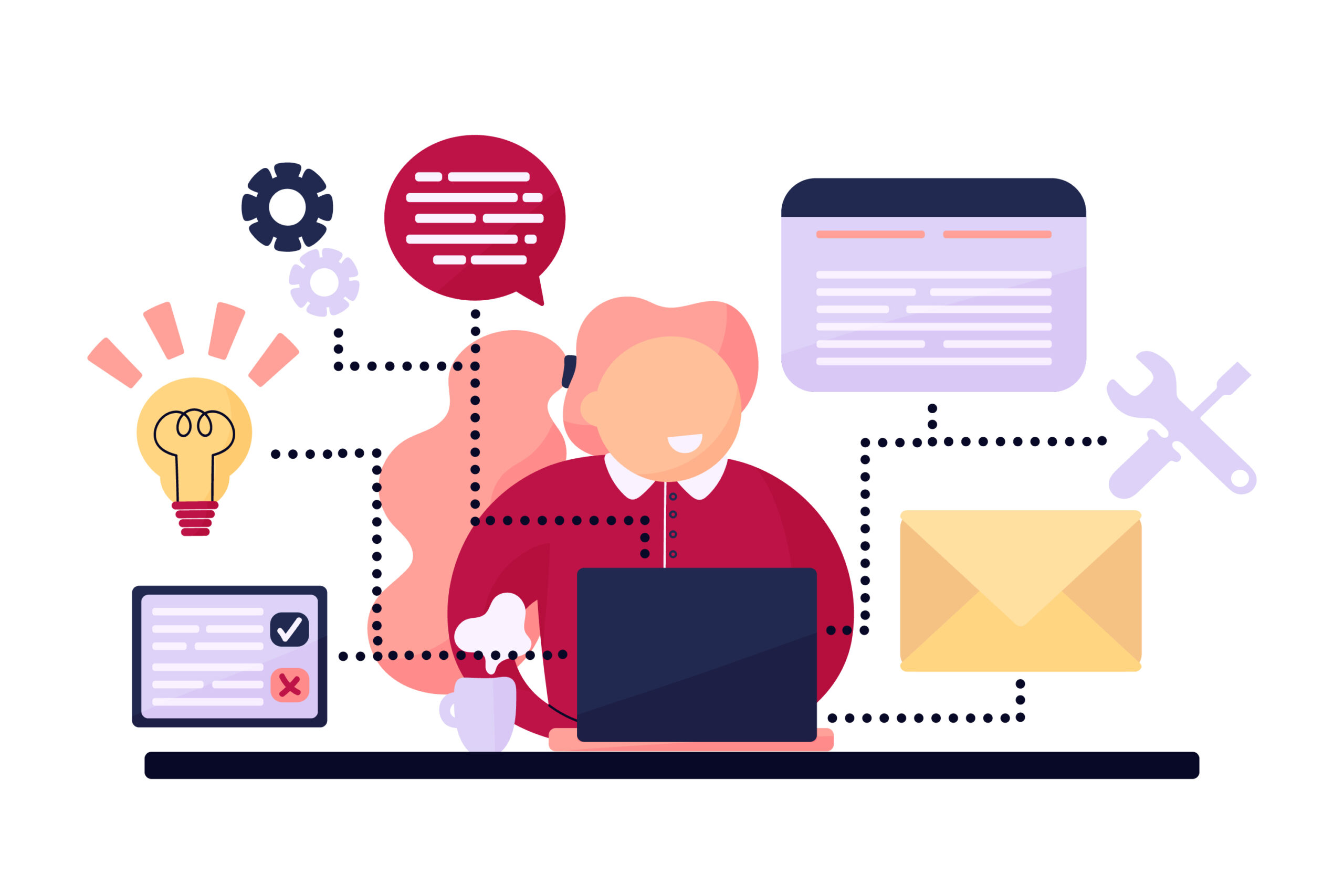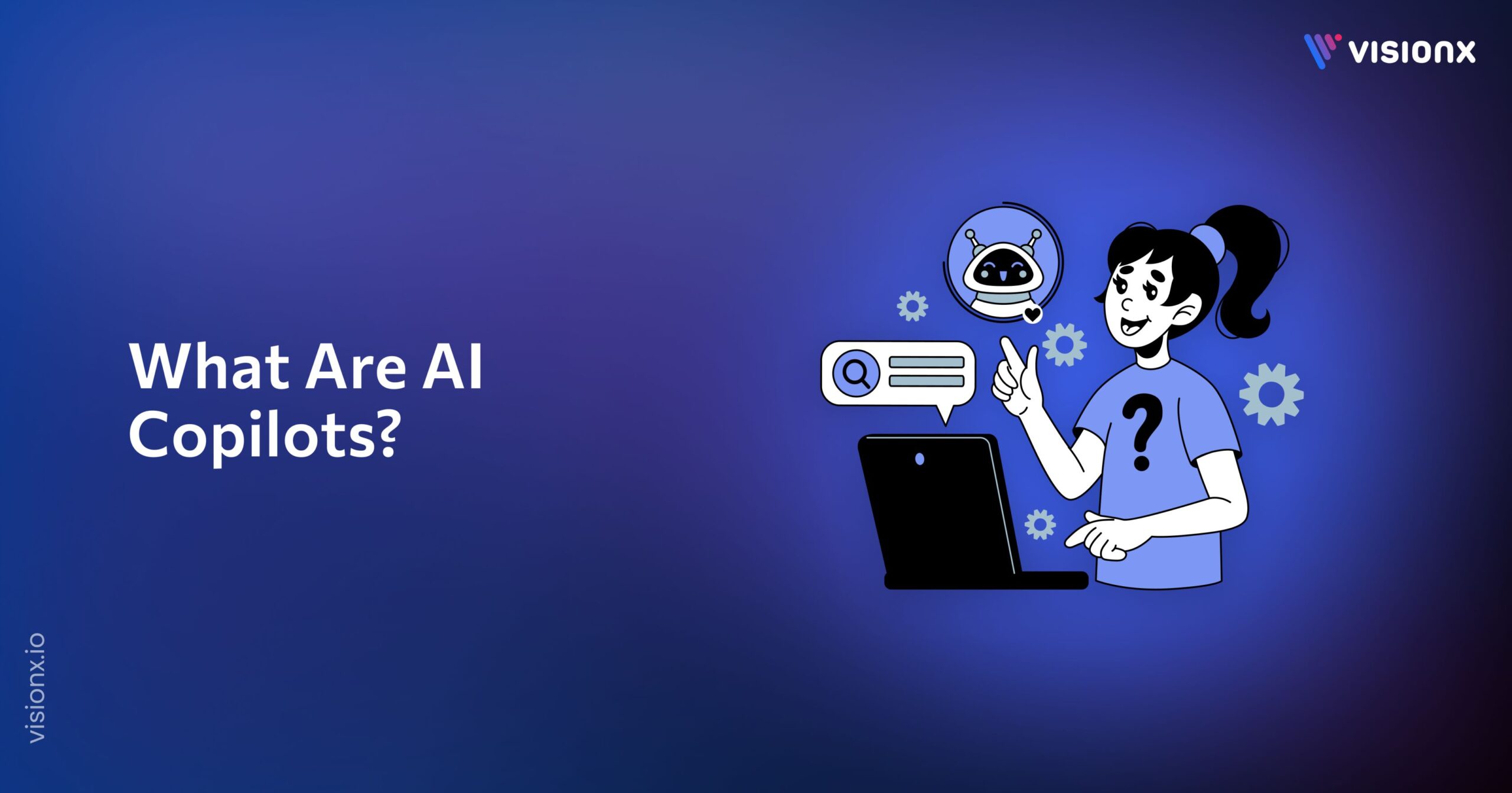Traditional monolithic systems hold business to keep up with the changing user expectations. Developers and business owners feel frustrated due to these limitations.
As digital experiences expanded across websites, mobile apps, and new devices like smart speakers and wearables, companies found themselves trapped in rigid frameworks where the front-end and back-end were tightly coupled. This dependency slowed down development, made omnichannel content delivery unmanageable, and created performance blockage.
In response to these challenges, the need for a more flexible, scalable system that separated content management from the presentation layer became urgent, leading to the rise of headless architecture.
What is Headless Architecture?
Headless architecture, or “headless” in the context of web and software development, refers to a system where the front-end (the presentation layer or user interface) is decoupled from the back-end (the content or functionality layer).
In a traditional system, the back-end and front-end are tightly coupled, meaning the same system controls both the data and how it is presented. However, in a headless architecture, the backend exists independently and provides content via APIs, while the frontend can be built using different technologies or frameworks.
This architecture allows developers to create multiple front-ends (e.g., websites, mobile apps, IoT devices) that pull data from a single back-end, improving flexibility and scalability.
Headless architecture is specifically beneficial for the retail industry, with 64% of companies adopting it to deliver a more flexible, omnichannel experience. Businesses using headless systems see a 20-30% improvement in conversion rates due to faster site performance and personalized customer experiences.
Headless Architecture vs. Microservices
Here’s a comparison table explaining the differences between Headless Architecture and Microservices:
| Aspect | Headless Architecture | Microservices |
| Definition | Separation of front-end and back-end via APIs, allowing multiple front-end platforms to use the same back-end. | It breaks down applications into small, independent services that communicate over a network. |
| Focus | Decoupling the presentation layer from the back-end for content delivery. | Decoupling the business logic into smaller, independent services. |
| Use Cases | Content management systems, e-commerce platforms, multi-channel content distribution. | Large-scale applications with complex functionality (e.g., Netflix, Amazon). |
| Front-End and Back-End | The front-end is decoupled from the back-end, enabling different front-end frameworks. | Each service can have its own back-end and communicate with others; front-end management is flexible. |
| Scalability | The back-end and front-end can scale independently, focusing on scaling content delivery. | Each microservice scales independently based on its specific demand. |
| Flexibility | Front-end technologies can vary, offering multi-platform flexibility. | Services can be built in different languages or frameworks based on needs. |
| Communication | Front-end communicates with the back-end using REST APIs or GraphQL. | Services communicate using APIs (REST, gRPC, or message brokers). |
| Example | Headless CMS (Contentful, Strapi), delivering content to websites, apps, or IoT devices. | Netflix’s service architecture includes independent services for user management, recommendations, and streaming. |
Benefits of Headless Architecture
Headless architecture offers the following advantages:
1. Omnichannel Experience
Headless architecture enables businesses to deliver content effortlessly across multiple platforms, including a website, mobile app, smartwatch, voice assistant, and even an IoT device, all from a centralized backend. This promises a consistent and personalized user experience, regardless of platform.
2. Flexibility in Front-End Development
Developers are free to choose their preferred front-end technologies, like React, Vue.js, or Angular, rather than being tied to the traditional CMS. This flexibility cultivates faster innovation and an improved user experience.
3. Faster Time-to-Market
By decoupling the front-end and back-end, teams can work in parallel, meaning front-end developers and content creators aren’t dependent on each other. This accelerates the deployment of updates and new features, allowing businesses to bring them to market more quickly.
4. Improved Scalability
The independent nature of front-end and back-end scalability makes it easier for businesses to optimize resources. You can improve the performance of the back-end content management without any impact on the front-end or vice versa.
5. Enhanced Security
Since the back-end isn’t directly exposed to users, decoupling provides an added layer of security, reducing the system’s vulnerability to attacks. The API layer further strengthens protection, minimizing potential entry points for malicious actors.
6. Future-Proofing
A headless setup is designed to be flexible and adaptable. As new technologies emerge, you can easily integrate them or add new front-end channels without needing to overhaul the back-end infrastructure.
7. Content Reusability
Storing content separately from its presentation allows it to be reused effortlessly across different platforms. This is especially beneficial for global organizations needing to deploy the same content across multiple regions or devices.
8. Performance Optimization
Headless systems typically lead to faster websites and applications, as front-end performance can be independently optimized. Static site generators or single-page applications can retrieve content efficiently through APIs, improving load times.
9. Personalization and Customization
With headless architecture, delivering personalized content to different audience segments becomes simpler. Developers can integrate sophisticated personalization engines without being restricted by the limitations of traditional CMS platforms, which boosts user engagement.
10. Long-Term Cost Efficiency
Although initial setup might require more investment, the long-term advantages are clear: faster development cycles, reduced maintenance, and the ability to adapt to new technologies without extensive rework all contribute to significant cost savings over time.
Monolithic Drawback: Reasons to Opt for Headless Architecture
The introduction of headless architecture was driven by several limitations of traditional monolithic systems. These limitations made it challenging for businesses to adapt to evolving digital experiences, particularly with the rise of omnichannel delivery and the demand for customized front-ends. Here are the key limitations that led to the emergence of headless architecture:
1. Rigid Templating and Presentation Layer
Traditional CMS platforms (like WordPress or Drupal) tightly couple the front-end and back-end, meaning the content and its presentation are intertwined. This creates rigid constraints on how content is displayed, limiting the ability to customize the user interface or deliver content across different devices or platforms (e.g., mobile apps, kiosks, smartwatches).
The lack of flexibility to build unique front-end experiences that go beyond pre-defined templates made it difficult for businesses to meet modern design and user experience expectations.
2. Inability to Support Omnichannel Delivery
As more devices and channels (like mobile apps, smart devices, voice assistants, and IoT) emerged, businesses needed a way to deliver content across these multiple platforms consistently. Traditional CMS platforms were not built to support this need efficiently.
Monolithic systems could not easily push the same content to different platforms, and this led to duplicated content management efforts for each platform, increasing operational complexity.
3. Scalability Challenges
In traditional architectures, both the front-end and back-end are tied together, meaning they must be scaled as one unit. This can lead to performance bottlenecks, as a spike in traffic to the frontend also impacts the backend’s performance.
The inability to scale the front-end and back-end independently limits performance optimization, especially for large-scale or high-traffic applications.
4. Slower Development and Time-to-Market
Because the front-end and back-end are tightly integrated, changes to one often require changes to the other. This creates development dependencies that slow down both the front-end and back-end teams, resulting in longer development cycles.
Traditional systems did not support parallel workflows for front-end and back-end development, limiting the speed at which new features, updates, and platforms could be introduced.
5. Limited Customization and Personalization
Traditional systems often come with pre-defined templates and themes, which restrict the ability to create highly customized user experiences. Businesses with more advanced needs, such as personalized content or complex user interfaces, found traditional systems inadequate.
Personalization, especially on dynamic front-ends, is difficult in monolithic architectures, as the front-end is typically tied to how content is stored and delivered in the back-end.
6. Difficult Integration with Modern Front-End Frameworks
With the rise of modern front-end frameworks like React, Vue.js, and Angular, traditional CMS systems struggled to integrate with these frameworks. The lack of API-driven content delivery in monolithic systems meant that developers couldn’t easily separate the presentation layer from the back-end.
This limitation hindered the adoption of single-page applications (SPAs) and other advanced web technologies.
7. Poor API Support
Monolithic CMS platforms were not built with an API-first approach, limiting their ability to deliver content to different platforms through APIs. This was particularly problematic as businesses increasingly wanted to provide data and content to external services, mobile apps, or other systems via APIs.
Traditional systems often had limited or no support for REST APIs or GraphQL, which are now crucial for decoupled architectures.
8. Difficulty in Content Reusability
In traditional systems, content is often created for specific platforms (e.g., a website), and reusing that content for other platforms like mobile apps or social media involves significant duplication of effort.
The tightly coupled nature of these systems limited the ability to easily reuse and repurpose content across different channels.
When is it useful?
- When businesses need to manage and reuse content efficiently across different platforms. Headless systems store content independently from its presentation, which makes it easy to repurpose content for multiple touchpoints (e.g., mobile app, website, chatbot) without recreating it.
- When a business operates globally and requires efficient management of multilingual content across different regions and channels. Headless architecture enables easy deployment of localized content to different markets, while ensuring consistency.
- When an e-commerce business requires flexibility and a custom shopping experience. E-commerce platforms often have complex, high-performance needs, with personalization, fast search, and varied device interactions. Headless architecture enables businesses to create custom experiences (like integrating progressive web apps or voice search) while managing products and transactions on the back-end.
- When businesses need to integrate multiple third-party tools or services such as CRM systems, marketing automation, or analytics tools. Headless architecture’s API-driven approach makes it easier to connect with external systems, enhancing the overall ecosystem.
When is it not useful?
- Small Websites or Blogs: For simple websites with basic content management needs, a traditional CMS might be more straightforward and cost-effective.
- Limited Developer Resources: Headless architecture requires strong development teams to build custom front-ends, which may not be feasible for small businesses with limited technical resources.
- Budget Constraints: The initial implementation of headless systems can be more expensive compared to using an all-in-one platform, especially for smaller projects.
Wrapping Up
Headless architecture was a direct response to the limitations of traditional monolithic systems, which struggled to keep pace with the evolving demands of modern digital experiences. Headless architecture addresses the challenges of rigid front-end structures, limited scalability, and the inability to deliver content across multiple platforms efficiently.
By decoupling the front-end from the back-end, businesses gain greater flexibility in development, faster time-to-market, and enhanced scalability.


